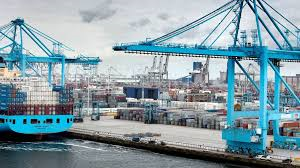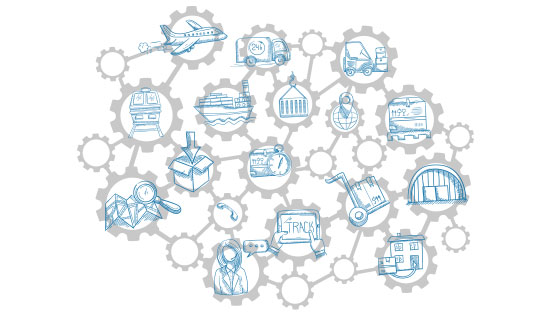Get ready for the next wave of communications: the Supply Chain Internet of Things
At Aber Logistics we closely follow the developments of the benefits of IoT for Supply Chain. Contact us to arrange a meeting to see what the effects can be for your supply chain or for more information on our IoT Supply Chain workshop.
Please find below a first introduction
What is the Supply Chain Internet of Things
The Internet of Things is a phrase being coined that refers to a network comprised of “intelligent” devices and sensors that can communicate with each other. IoT promises to provide real-time performance monitoring in a world where machines and applications can self-optimize, self-configure and self-diagnose. The idea seems like a fantasy but look at the Internet of today or even cloud storage. These intangible concepts changed communications and file storage capabilities and methods.
The Core Benefits of the Internet of Things to a Supply Chain
Organizations can respond promptly to changes with IoT integration into their processes. Undesirable conditions, such as a transportation delay, will do more than set off an alert. Systems can automatically assess priorities, review choices and make problem-solving decisions. Some benefits of additional real data and enhanced intelligent automaticity within the supply chain internet of things are an increase in profits, a reduction in excess product that quickly loses value, faster response to changing client needs or supplier availability, the optimization of shipments and the assurance of complete deliveries.
With IoT, an organization can:
• Easily process profitable returns
• Consolidate shipments based on multiple factors
• Reroute goods instantaneously
• Service parts on-demand
• Quickly manufacture products with a short-lifecycle
• Make changes in the middle of production
• Use time-sensitive data to make more accurate predictions of demand
• Supply Chain Internet of Things Changes the Face and Methods of Big Business
Companies are harnessing the potential of IoT. Their operations, functionality, services and products offered and real-time feedback regarding customer demand are changing as they accommodate and leverage IoT. Some major changes are underway.
Retailers are implementing IoT technology. Using Apple’s iBeacon technology, customers receive relevant deals on their smartphones as they walk through different areas in a store. Retailers can change, develop and execute strategies based on real customer preferences and seeing what deals customers respond to and the types of items purchased. These supply chain internet of things technologies provides direct insight into customer demand.
IoT is able to provide pertinent data to end users, create more engagement with customers and use shopping behaviour to prompts in real-time to uncover preferences and customer demands. New IOT interfaces and applications allow for more salient information faster with the potential to respond without human input. Built into a supply chain, users will see an increase in end-to-end visibility with clear timely data at all stages. Supply chains can become more agile and responsive to changing conditions, client preferences, and issues, delivering a higher level of service without sacrificing profit.
Management of More Data
Will the supply chain internet of things become a blessing or a curse? IoT is a tool and the automaticity it provides companies will prove to be an asset if the management tools and internal processes of supply chains can be equipped to handle the change. Obviously, if competitors are using IoT “smart” devices and getting data faster, critical decisions automated and response time shortened, this is going to separate them from the rest of the group and give them an edge in responding to customers and increasing efficiencies within their organization. These agile leaders will gain market share and customer loyalty in highly competitive industries while satisfying the demands of shareholders.



